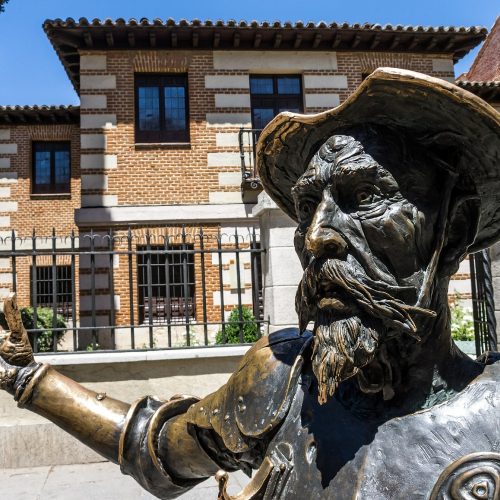
Who is Don Quixote
Don Quixote
This week we are diving into Spanish culture and talking about perhaps the most internationally famous character to come from Spain, Don Quixote.
Who is he?
Don Quixote is the main character of Miguel Cervantes’ novel El Ingenioso Hidalgo Don Quijote de la Mancha (The Ingenious Nobleman Sir Quixote of La Mancha), commonly known as Don Quixote for short. We hope to dive into more of Cervantes’ work in the future but the main thing to know for now is that Cervantes is essentially the Shakespeare of Spanish literature and this novel is considered the most influential book of the Spanish language as well as one of the greatest works of fiction ever written. Don Quixote was released in two separate volumes; the first part being released in 1605 and the second part not until 1615.
The novel is written in the form of episodes, following the adventures of Alonso Quixano, a hidalgo who read so many chivalric romances that it drove him to lose his mind. Instead of having a clear understanding of the world he lived in, he took on an alter-ego, Don Quixote de La Mancha, and set out to bring back chivalry and bring justice to the world. He was accompanied by his faithful squire, Sancho Panza.
So, yes, he is a fictional character but with such worldwide popularity, he can feel larger than life.
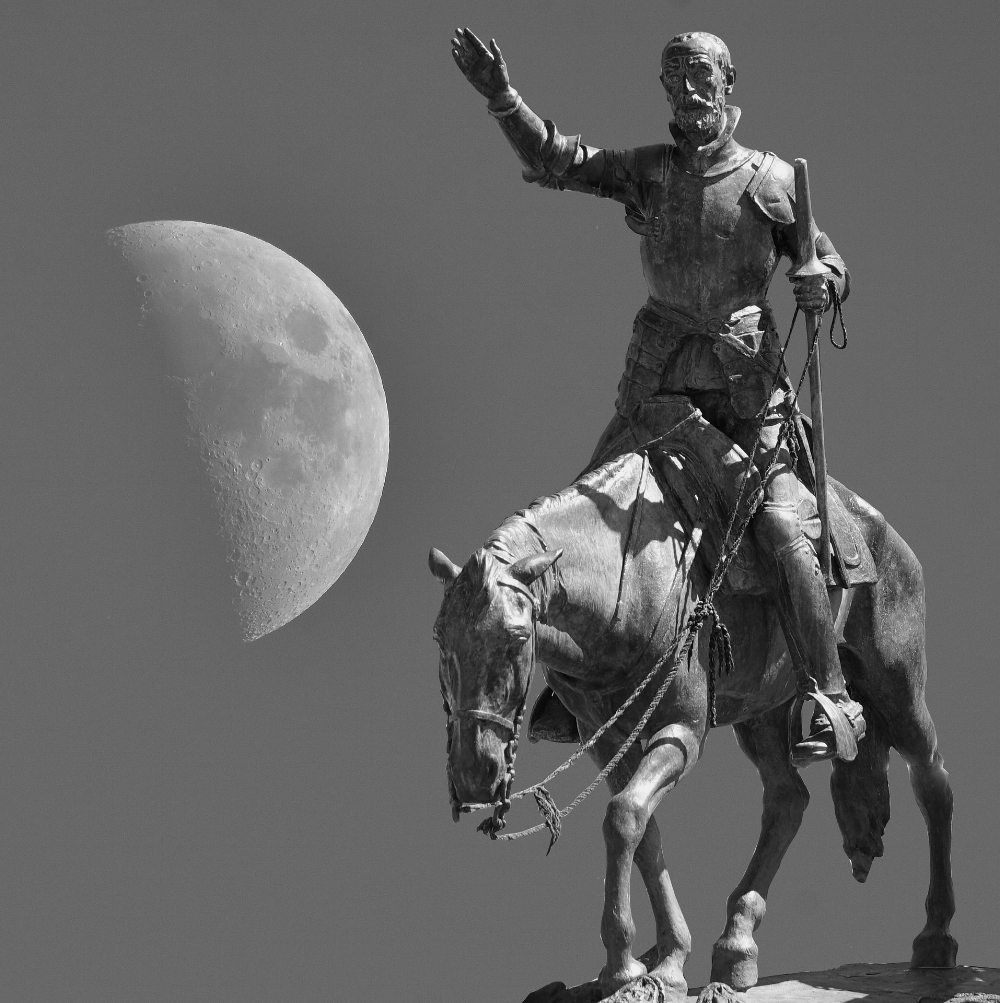 What should you know about him?
What should you know about him?
Cervantes’ original novel pretty much touched on every theme and motif in the book (pun intended)! It has been called dramatic,comic, romantic, and satirical but that should come as no surprise once you understand the historical context. Don Quixote has been called the first modern novel and it is precisely because it was written in a way that reflected the chivalric romance literature that came before it, while at the same time poking fun at it and satirizing the exact ideals its characters represented.
Don Quixote was such a pure example of the idealism and the chivalry yet he was also continuously disillusioned and made the butt of practical jokes. With such juxtaposition and contradictory themes, it becomes incredibly difficult to fully grasp the meaning behind Cervantes’ masterpiece. Edith Grossman, the translator of the 2003 English version of Don Quixote, summarizes this point better than I could, so I’m simply going to leave you her words, which you can also listen to in this video clip:
“When I first started reading the Quixote I thought it was the most tragic book in the world, and I would read it and weep […] As I got older and my skin got thicker and thicker, I became less and less sensitive, I guess, I found it funnier and funnier. […] I think for a good translation the tragedy—which is absolutely there, I’m convinced—and the humor have to be present. […] This is done […] as Cervantes did it […] by never letting the reader rest. You are never certain that you truly got it. Because as soon as you think you understand something, Cervantes introduces something that contradicts your premise.”
What are his ties to Spain and where can you find him?
La Mancha: Cervantes was very clever in not naming an exact village that his hero hailed from, instead allowing the entire communidad of La Mancha “to contend among themselves for the right to adopt him and claim him as a son, as the seven cities of Greece contended for Homer.” You can find many remnants of Don Quixote throughout this autonomous region, the most notable being…
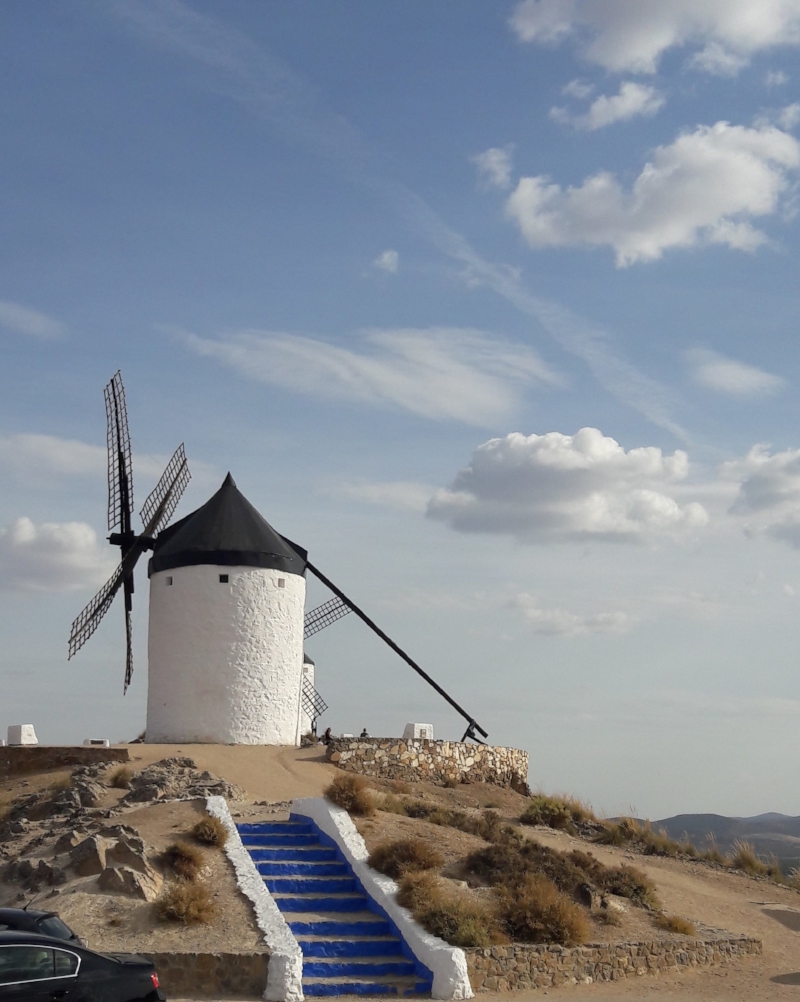 Don Quixote Windmills: The nobleman’s battle with windmills is emblematic of Cervantes’ novel and has inspired such expressions such as “tilting at windmills” which essentially means attacking incorrectly-perceived or imaginary enemies. Don Quixote’s misguided interpretation of windmills as an enemy that needed to be met with violence can be interpreted as an allegory for Spain and other countries’ foreign policies at the time. You can follow the protagonist’s journey and see a number of these traditional windmills using the Don Quixote route, other windmill routes, or simply by stopping in one pueblo like Consuegra.
Don Quixote Windmills: The nobleman’s battle with windmills is emblematic of Cervantes’ novel and has inspired such expressions such as “tilting at windmills” which essentially means attacking incorrectly-perceived or imaginary enemies. Don Quixote’s misguided interpretation of windmills as an enemy that needed to be met with violence can be interpreted as an allegory for Spain and other countries’ foreign policies at the time. You can follow the protagonist’s journey and see a number of these traditional windmills using the Don Quixote route, other windmill routes, or simply by stopping in one pueblo like Consuegra.
Plaza de Espana in Madrid: In this famous square you can find bronze statues of Don Quixote and Sancho Panza riding on horseback, being watched by a stone statue of Cervantes. The foutains on either side of the horse-riding pair are meant to symbolize Don Quixote’s love in her two personas, Aldonza and Dulcinea.
Valladolid: Cervantes was living in this city when part one of Don Quixote was published and you can tour his house, which is now a museum, to learn more of the early days of Don Quixote’s fame and what the famous author’s life was like when his most famous work was published.
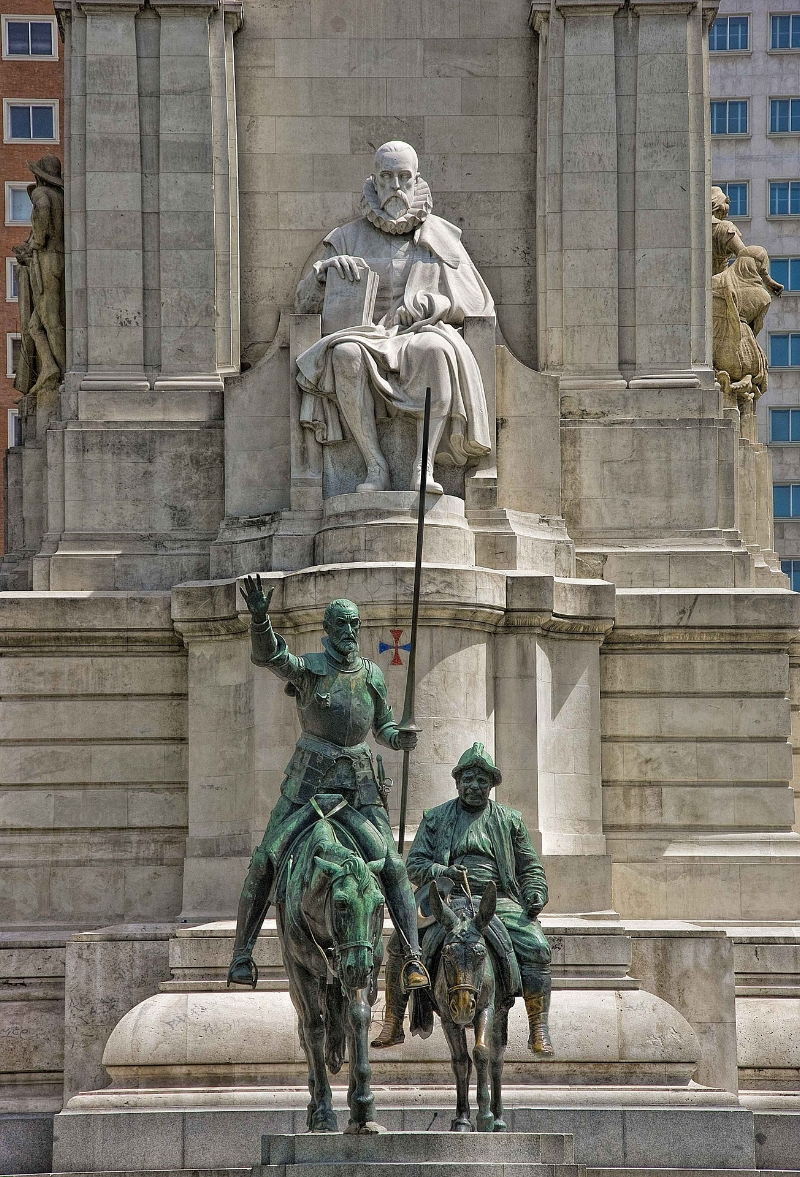 Influences on many authors and artists, in Spain and abroad: Parallels have been drawn between Don Quixote and the works of many famous writers, among them some of the most notable being Vladamir Nabokov, Jorge Luis Borges, Henry Fielding, Gustave Flaubert, and Gabriel Garcia Marquez. Countless artists, including Gustave Doré, Pablo Picasso, Salvador Dalí and Antonio de la Gandara, have been inspired by Don Quixote as well. The novel has been adapted into a variety of theater, film, and TV productions as well, one of the most notable being the Broadway musical Man of La Mancha.
Influences on many authors and artists, in Spain and abroad: Parallels have been drawn between Don Quixote and the works of many famous writers, among them some of the most notable being Vladamir Nabokov, Jorge Luis Borges, Henry Fielding, Gustave Flaubert, and Gabriel Garcia Marquez. Countless artists, including Gustave Doré, Pablo Picasso, Salvador Dalí and Antonio de la Gandara, have been inspired by Don Quixote as well. The novel has been adapted into a variety of theater, film, and TV productions as well, one of the most notable being the Broadway musical Man of La Mancha.
Resources Used:
https://www.theparisreview.org/blog/2011/03/28/why-we-read-don-quixote/
https://en.wikipedia.org/wiki/Don_Quixote#Meaning
http://www.findingdulcinea.com/guides/Entertainment/Books/Don-Quixote.pg_00.html
https://en.wikipedia.org/wiki/List_of_works_influenced_by_Don_Quixote


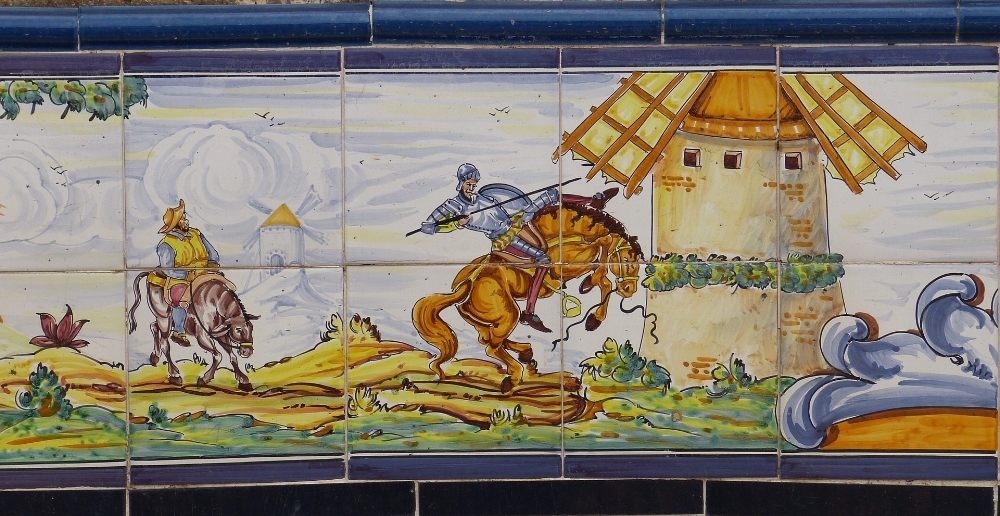
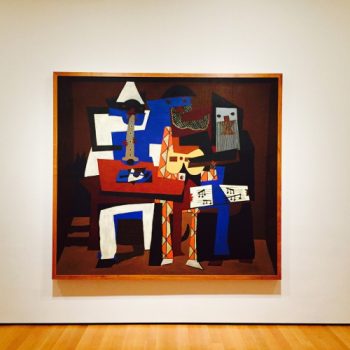
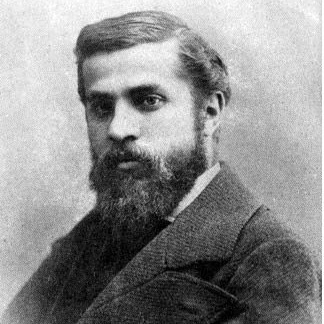
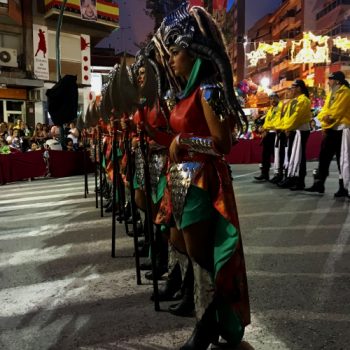
2 Comments
Steve
For a non Spanish reader, does the English translation from 2003 do it justice?
Sincerely, Spain
I’ve struggled with this exact question myself, Steve! I have to be honest with you, I have not read the 2003 translation myself but from the accolades Edith Grossman has received, I am led to believe the answer is yes. According to some of the resources included in this article as well as this discussion on Reddit, it seems that readers feel Grossman does a nice job of preserving the many sides of Cervantes’ writing (including the humor and additional explanation in footnotes for deeper understanding). https://www.reddit.com/r/books/comments/6h12hj/rbooks_ranking_of_don_quixote_translations/
Even as a Spanish-reader, I have always been drawn to but terrified of undertaking such a novel as Don Quixote and am unsure in which language I will finally dive into this novel in its entirety. However, I am personally leaning towards Grossman’s translation after the research I’ve done. Hope that helps!